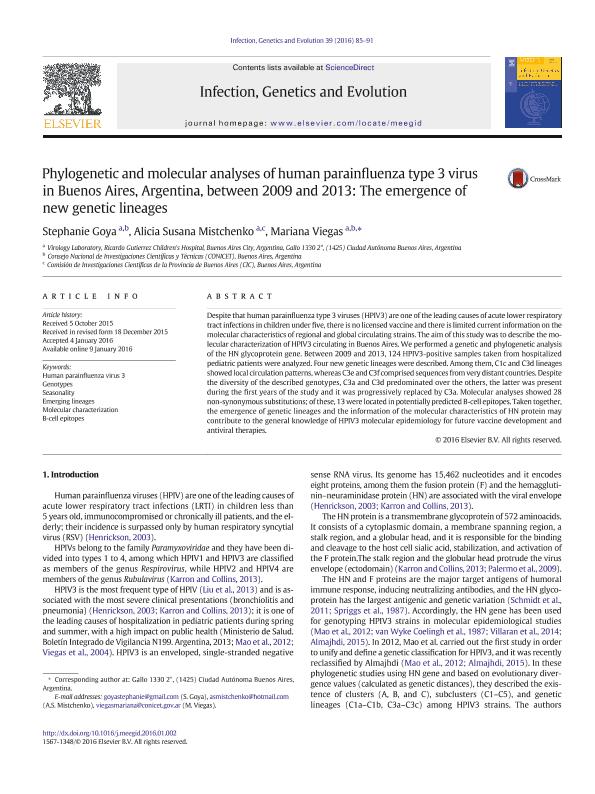Artículo
Phylogenetic and molecular analyses of human parainfluenza type 3 virus in Buenos Aires, Argentina, between 2009 and 2013: The emergence of new genetic lineages
Fecha de publicación:
01/2016
Editorial:
Elsevier Science
Revista:
Infection, Genetics and Evolution
ISSN:
1567-1348
Idioma:
Inglés
Tipo de recurso:
Artículo publicado
Clasificación temática:
Resumen
Despite human parainfluenza type 3 viruses (HPIV3) are one of the leading causes of acute lower respiratory tract infections in children under five, there is no licensed vaccine and there is limited current information on the molecular characteristics of regional and global circulating strains. The aim of this study was to describe the molecular characterization of HPIV3 circulating in Buenos Aires. We performed a genetic and phylogenetic analysis of the HN glycoprotein gene. Between 2009 and 2013, 124 HPIV3 positive samples taken from hospitalized pediatric patients were analyzed. Four new genetic lineages were described. Among them, C1c and C3d lineages showed local circulation patterns, whereas C3e and C3f comprised sequences from very distant countries. Despite the diversity of the described genotypes, C3a and C3d predominated over the others, the latter was present during the first years of the study and it was progressively replaced by C3a. Molecular analyses showed 28 non-synonymous substitutions, of these 13 were located in potentially predicted B-cell epitopes. Taking together, the emergence of genetic lineages and the information of the molecular characteristics of HN protein may contribute to the general knowledge of HPIV3 molecular epidemiology for future vaccine development and antiviral therapies.
Archivos asociados
Licencia
Identificadores
Colecciones
Articulos(SEDE CENTRAL)
Articulos de SEDE CENTRAL
Articulos de SEDE CENTRAL
Citación
Goya, Stephanie; Mistchenko, Alicia Susana; Viegas, Mariana; Phylogenetic and molecular analyses of human parainfluenza type 3 virus in Buenos Aires, Argentina, between 2009 and 2013: The emergence of new genetic lineages; Elsevier Science; Infection, Genetics and Evolution; 39; 1-2016; 85-91
Compartir
Altmétricas




